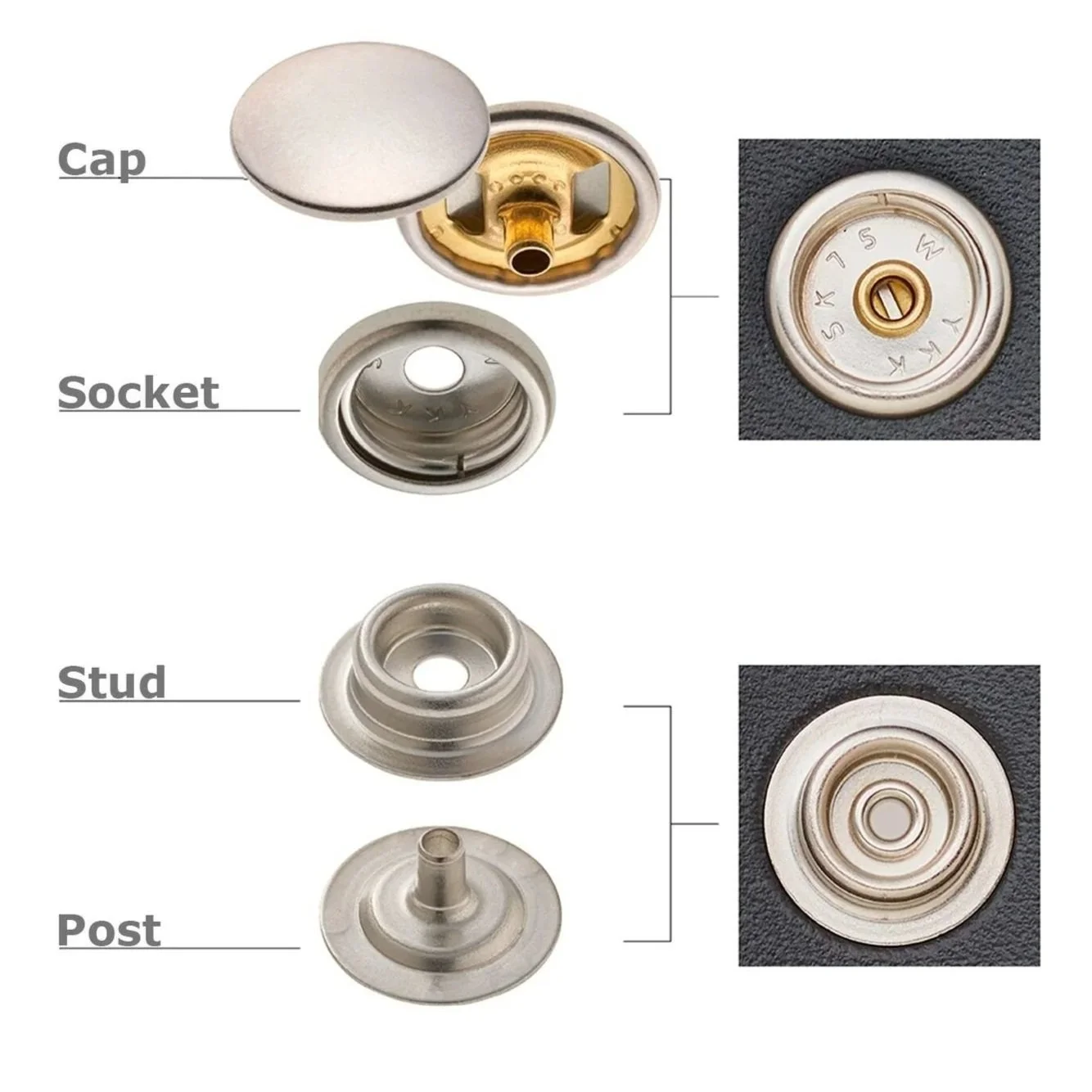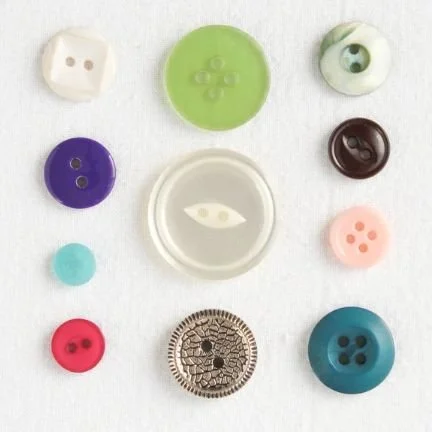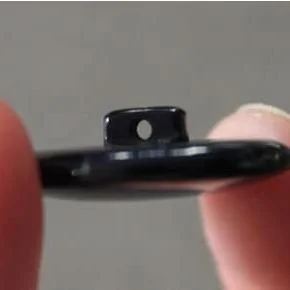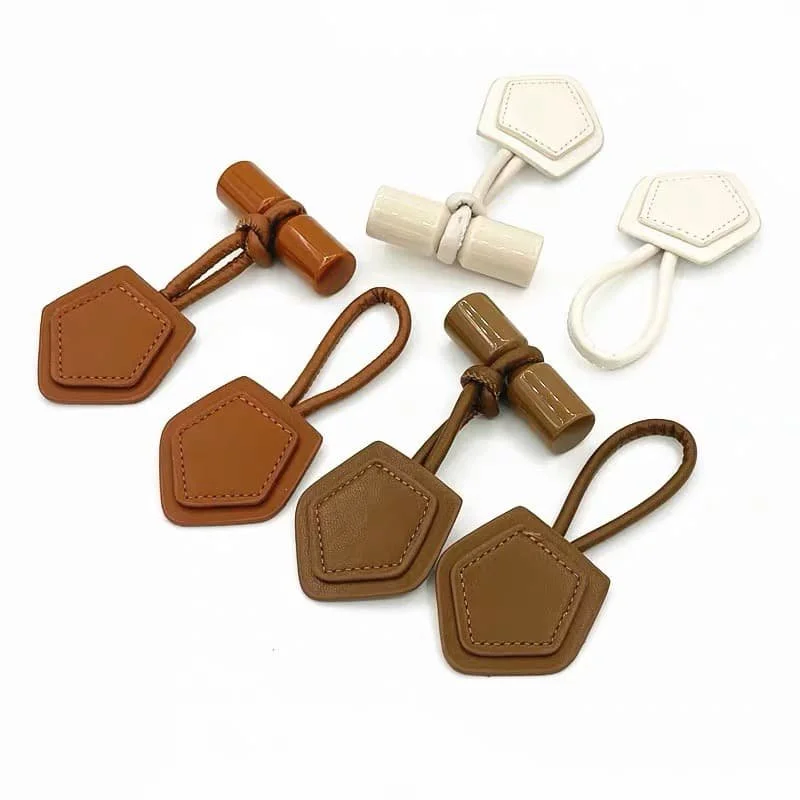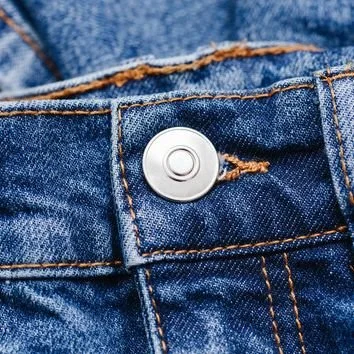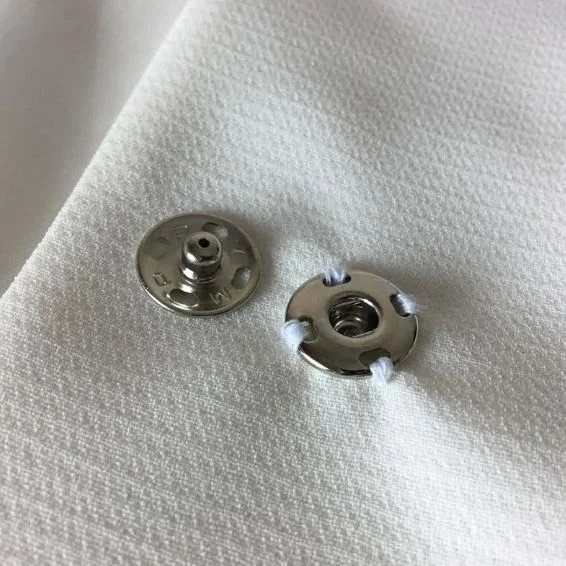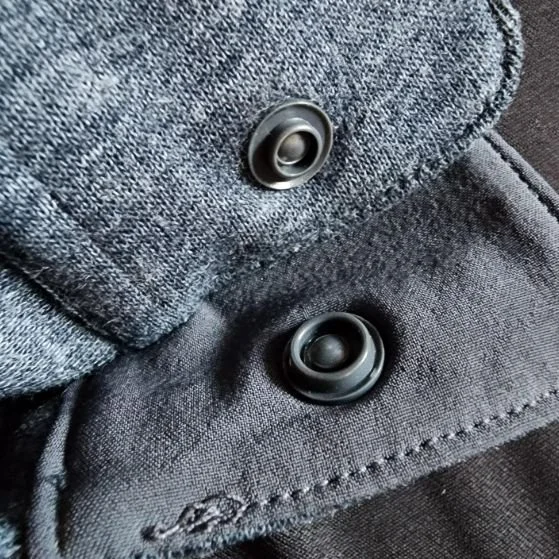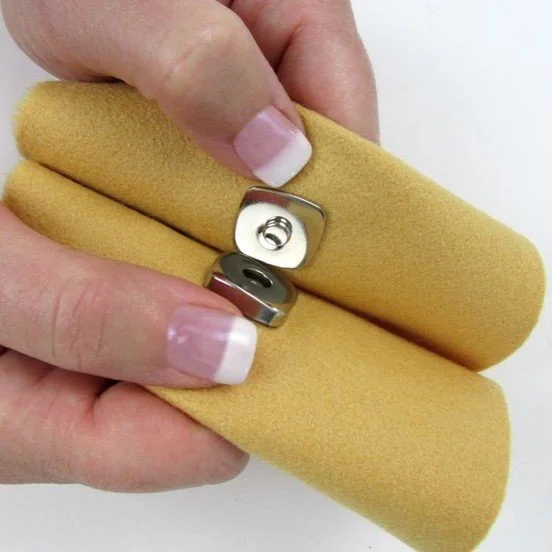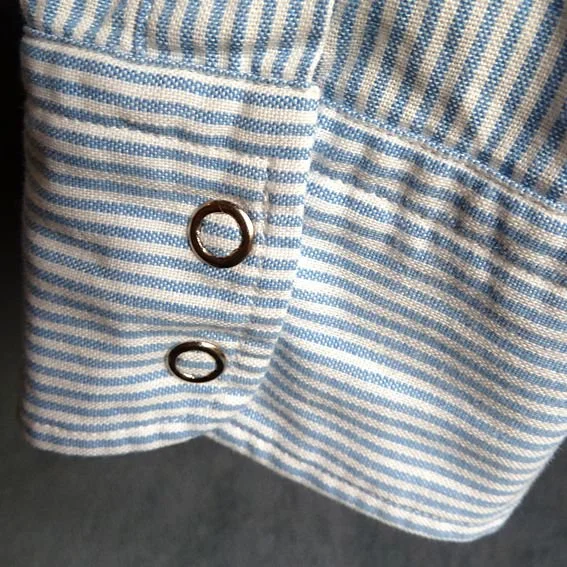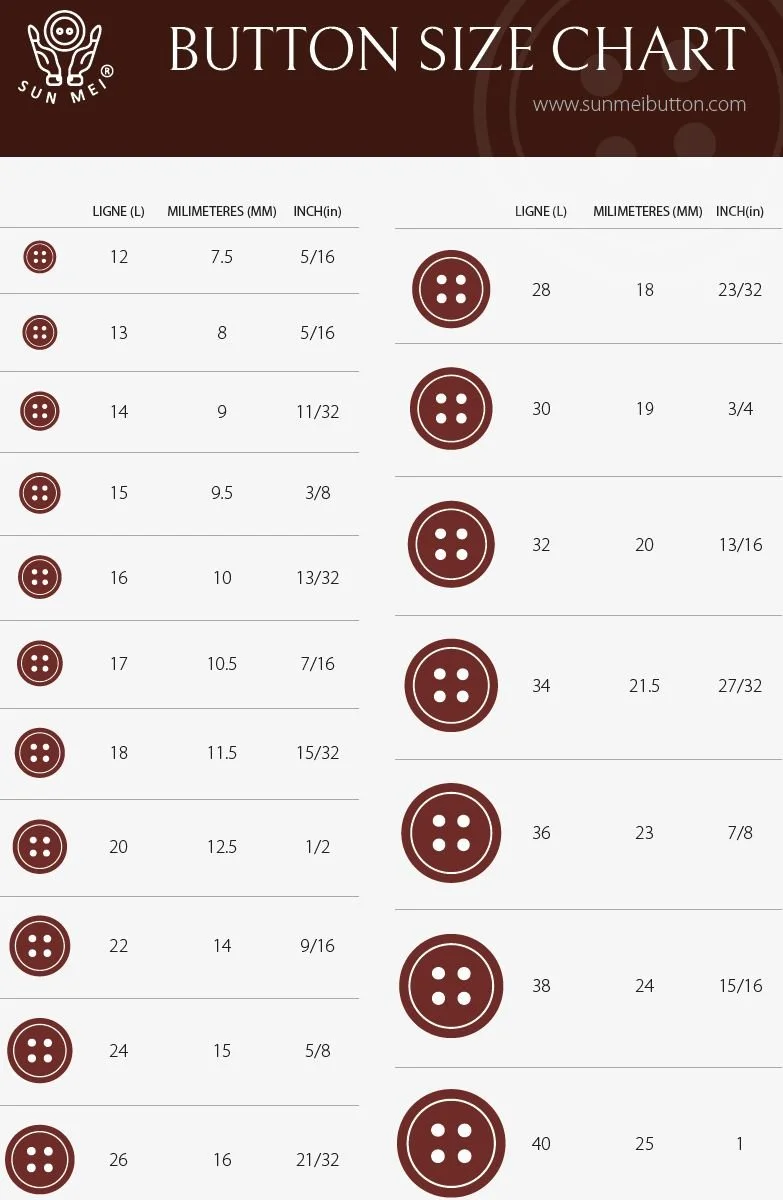Buttons and Snaps 101: A Designer's Guide to Choosing and Using Buttons and Snaps
Choosing the right fastener is more than just a functional decision in sewn product design. It's a design detail that can influence the user experience, durability, and overall aesthetic. Buttons and snaps are two common go-to choices when a product needs to be easy to open, close, or remove. Think of classic shirts, blouses, cushion covers, duvet cases, bags, and even babywear.
Compared to zippers or hook-and-loop (Velcro), buttons and snaps offer greater design flexibility and can better accommodate varied materials and users. But how do you choose the right option?
Let's walk through the basics of using buttons and snaps in sewn product design—when to use them, the types available, and how to make smart design decisions around them.
Part 1: The Basics of Working with Buttons and Snaps
Buttons and snaps allow for fabric closures without the rigidity or permanence of zippers. They offer a more customizable approach to closure placement. They also give designers a way to add texture, color, and visual appeal to their product.
Buttons and snaps are useful when:
You need removable covers or adjustable garment openings.
A garment requires a secure closure but also needs flexibility.
You're designing a soft product that shouldn't have rigid or sharp fasteners.
Style or texture variety is important to the final product.
How Do Buttons and Snaps Work?
It may feel obvious to you from a user-experience perspective, but let's take a moment to explain the mechanics of buttons and snaps from a design perspective.
Buttons are typically attached by sewing through holes or a shank, and they fasten by passing through a matching buttonhole or fabric loop. They rely on tension and fabric structure to stay secure.
Snaps work by locking two interlocking discs together—one male and one female part. Some snaps are sewn onto fabric, while others are applied with pressure tools.
For comparison, zippers consist of two rows of teeth that interlock when a slider pulls them together. They're excellent for speed and security, especially in activewear or items that need a continuous closure, but they're harder to repair or replace than buttons and snaps.
Part 2: Types of Buttons and Snaps
There's a wide variety of buttons and snaps used in sewn product design. Buttons are typically made of anything from plastic and metal to bone and wood, while snaps are traditionally made of metal or plastic. To help you understand the differences and available options, here's a breakdown of the most common types and when to use them.
Button Types
Sew-Through Buttons
The most widely used buttons, flat buttons, come in plastic, wood, shell, or metal, and usually have two or four holes for sewing. They're versatile and suitable for shirts, blouses, and casual wear.
Shank Buttons
These buttons have an additional loop or "shank" on the back. This provides the height needed for thick materials or multiple layers while adding a polished, dimensional look.
Toggle Buttons
With their elongated, cylindrical shape, toggle buttons are typically fastened with loops rather than buttonholes. They're usually plastic or wooden, and you'll see them on duffle coats and knitwear for a rustic or handmade aesthetic.
Stud Buttons
Often used in denim and outerwear, tack buttons are metal fasteners made of two parts that are hammered or pressed together. They're strong, durable, and often seen on jeans, jackets, and heavy-duty garments. Once applied, they're typically permanent and not sewn.
Snap Types
Sew-On Snaps
These small closures are sewn by hand or machine. Lightweight and discreet, they're often used in lingerie, blouses, and infant wear.
No-Sew Snaps (Snap Fasteners)
These are applied with a press or pliers and are more durable than sew-on snaps. They're ideal for bags, jackets, and utility garments.
Magnetic Snaps
Popular in handbags and outerwear, magnetic snaps provide a smooth, easy closure. They're great for users who need a one-handed open/close solution.
Ring Snaps / Prong Snaps
These are small metal snaps with pointed prongs that grip the fabric. They're commonly used in baby clothes and casual garments.
Part 3: Characteristics of Buttons & Snaps
Buttons and snaps come in a wide variety of styles, materials, and functions. Understanding their characteristics helps you choose the right closure for both form and function in your design. Here are some common types:
Covered Buttons
Fabric-covered buttons provide a seamless and elegant look, often used in formal wear or high-end designs. They can be matched to the garment fabric or used to contrast with the material for style.
Decorative Buttons
These buttons are all about visual impact. Embellished with gems, embossed metals, or other ornate features, they're common on blazers, dresses, and statement pieces.
Heavy-Duty Snaps
Built for durability, heavy-duty snaps are often found in industrial gear, canvas products, and leather items. They require special tools to apply.
Plastic Snaps (e.g., KAM snaps)
Colorful, lightweight, and easy to apply with a handheld press, KAM snaps are perfect for children's clothing, bibs, and cloth diapers.
Snap Tape
This is a strip of fabric with snaps already attached to it. It's easy to install, especially in babywear or home textiles.
Decorative Buttons & Novelty Closures
Beyond function, buttons and snaps can serve as eye-catching design elements. Oversized, uniquely shaped, or embellished buttons make bold fashion statements, while themed or textured snaps add flair to both garments and accessories.
Part 4: Care Tips for Buttons and Snaps
Caring for buttons and snaps begins with proper installation and continues throughout the life of your product. To help them last:
Ensure buttons and snaps are securely attached and reinforced at stress points
Fasten closures before washing to avoid snagging or tearing
Avoid excessive force when opening snaps to prevent loosening or breakage
Check regularly for loose threads or weakened fabric around closure areas
For metal snaps and buttons, wipe clean with a damp cloth to prevent rust or buildup. And always match the size and strength of your closures to the weight and use of your design.
Part 5: Choosing the Right Button or Snap for Your Design
Selecting buttons and snaps for your product design doesn't have to be complicated when you follow this set of criteria.
1. Consider the Product Type and Use
Does your fastener need to be decorative or functional? You might choose decorative buttons for looks, but heavy-duty snaps for strength. How frequently will the fasteners be used? Buttons may be useful, but snaps are great for items that are opened and closed often and require speed.
2. Determine the Right Match for Your Fabric
What type of fabric are you using in your product?
If you're using light fabrics, you'll want to use small sew-on snaps or plastic buttons.
If you're using heavy fabrics, you'll want to choose sturdy toggle buttons or industrial snaps.
If you're using stretch fabrics, you'll want lightweight plastic snaps that won't weigh down the garment.
3. Consider Your Target User
Another important factor when choosing a fastener is who your target audience is and how they will interact with your product. Kids need a fastener that is easy to use, safe, and colorful. Seniors need fasteners that are easy to maneuver, such as large buttons or magnetic snaps. High-fashion products pair well with covered buttons or detailed metal finishes and can elevate your design.
4. Choose Based on Aesthetics
Your fasteners can be functional and stylish, if that fits your vision. From all the options available, you can choose shapes, textures, and finishes that match your design. You'll find a fastener to match whether you want something rustic, modern, vintage, or fun.
5. Match the Button Size (Ligne) with Your Pattern
Traditionally, buttons are measured using ligne, a unit of measurement which originated with button makers as far back as the 9th century and is still in standard use today. You might have seen it before—the abbreviation "L" (14L or 20L, for example) on a sewing button or snap represents its size in ligne. A 40L button is equal to one inch or 25mm in diameter, making one ligne equal to 0.635mm.
That's too much math! So here's a convenient chart to refer to when measuring your buttons and snaps.
6. Production and Application
The fasteners you choose will also depend on the supplies and tools available to you or your manufacturer. Hand-sewn buttons require skilled labor and time, while snaps often need specialized presses or pliers for installation. When scaling up your production, you'll want to choose fasteners that are compatible with automated or semi-automated application methods to ensure consistency, speed, and cost-efficiency.
7. Maintenance and Care
For simplicity, match your fastener materials to the garment's care requirements. For example, select corrosion-resistant metals for dry-cleaned pieces and durable plastics for items destined for machine washing.
Your Quick Button and Snap Checklist:
Use this handy reference to confidently choose the right buttons or snaps for your design. Whether your focus is style, practicality, or both, this checklist keeps your priorities front and center during sourcing and production:
Function - Ease of use, secure fastening, frequency of use
Appearance - Size, shape, color, finish, visibility
Material Compatibility - Suitable for your fabric's weight and flexibility
Placement & Spacing - Ensures proper fit, closure strength, and visual balance
Special Features - Wash durability, magnetic closure, decorative vs. utilitarian
Design Smarter: Choose the Right Buttons or Snaps for Your Product
Buttons and snaps might seem like minor details, but they have a major impact on how your product looks, functions, and feels to the user. Choosing the right style and type — and making sure they align with your materials and design goals — is a smart move that elevates both form and function.
Need help selecting the right closures for your prototype or sample run? Book a consultation for expert guidance on material sourcing and product development.
For further learning on buttons and snaps, check out these additional resources:


